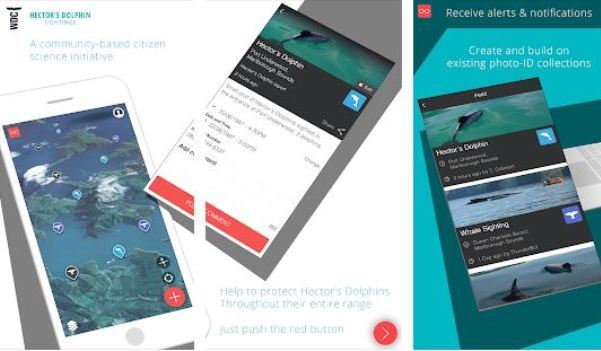Whale and Dolphin Conservation news
More concerns have been raised by Whale and Dolphin Conservation (WDC) over the government’s failure to meet election promises for protection of the endangered Hector’s dolphins and critically endangered Māui dolphins. This follows the release of new data that shows how active the dolphins are around the top of the South Island.
In the 2017 election, the government made manifesto promises to protect them, but has done very little since.
There are fewer than 60 Māui dolphins left, and the Hector’s population is down to just 20% of its former size, with set-netting and trawls in coastal regions killing these dolphins at a rate that could see them wiped out forever.
In March this year, a local Hector’s dolphin was found dead at Rabbit Island, by Nelson. The dolphin’s body showed marks made by fishing net with the official cause of death – suffocating in a set net.
Woefully inadequate protected areas for the dolphins were designated in 2008 but did not include the highly important Cook Strait and Taranaki Bight areas. Lack of data cited as the reason.

Now, data collected by the Hector’s Dolphin Sightings App, shows a five-fold increase in sighting records for Hector’s dolphins around the top of the South Island. This indicates the top of the South is an important habitat for Hector’s dolphins and should be protected from set nets and trawling. The Hector’s dolphin sighting database has jumped from 45 to 227 sighting events around the top of the South, since the app was launched less than two years ago, in partnership with WDC and the Department of Conservation (DOC).
People have been encouraged to download the app and record their sightings of Hector’s, Māui dolphins, and other species, and upload images to help species identification.
The increase in data gives the government a fresh incentive to fulfil their election promises to increase protection and make the transition to selective fishing methods that are better for the entire inshore ecosystem.
‘Hector’s dolphins at the top of the South link the West and East coasts of South Island,” says Gemma McGrath, WDC Consultant. ‘These dolphins have the potential to enhance genetic diversity of Māui dolphins, and may also be crucial for their future. Meanwhile, plastic fishing nets are pushing these indigenous dolphins to extinction.’
‘New Zealand has an important international reputation on conservation issues, but is utterly failing these little dolphins, who are found nowhere else on Earth,’ Mike Bossley, WDC Research Fellow Emeritus, says, ‘If the government doesn’t take decisive action now, they will be responsible for a mammal extinction.’
WDC is running an international public petition urging the government to keep its election promises and protect the dolphins. Whales.org/savenzdolphins.
The petition asks that the NZ government protects Hector’s and Māui dolphin habitat, across Cook Strait at the top of the South. The Taranaki Bight area is also home to Aotearoa’s Blue whale breeding ground, and many other whale and dolphin species in Cook Strait.
The world is wondering why a government that claims to be pro-conservation and pro-environment is allowing a native mammal to face local extinctions. It’s time to make our indigenous dolphins a priority by protecting their habitat and changing to safer, more selective ways to fish.
